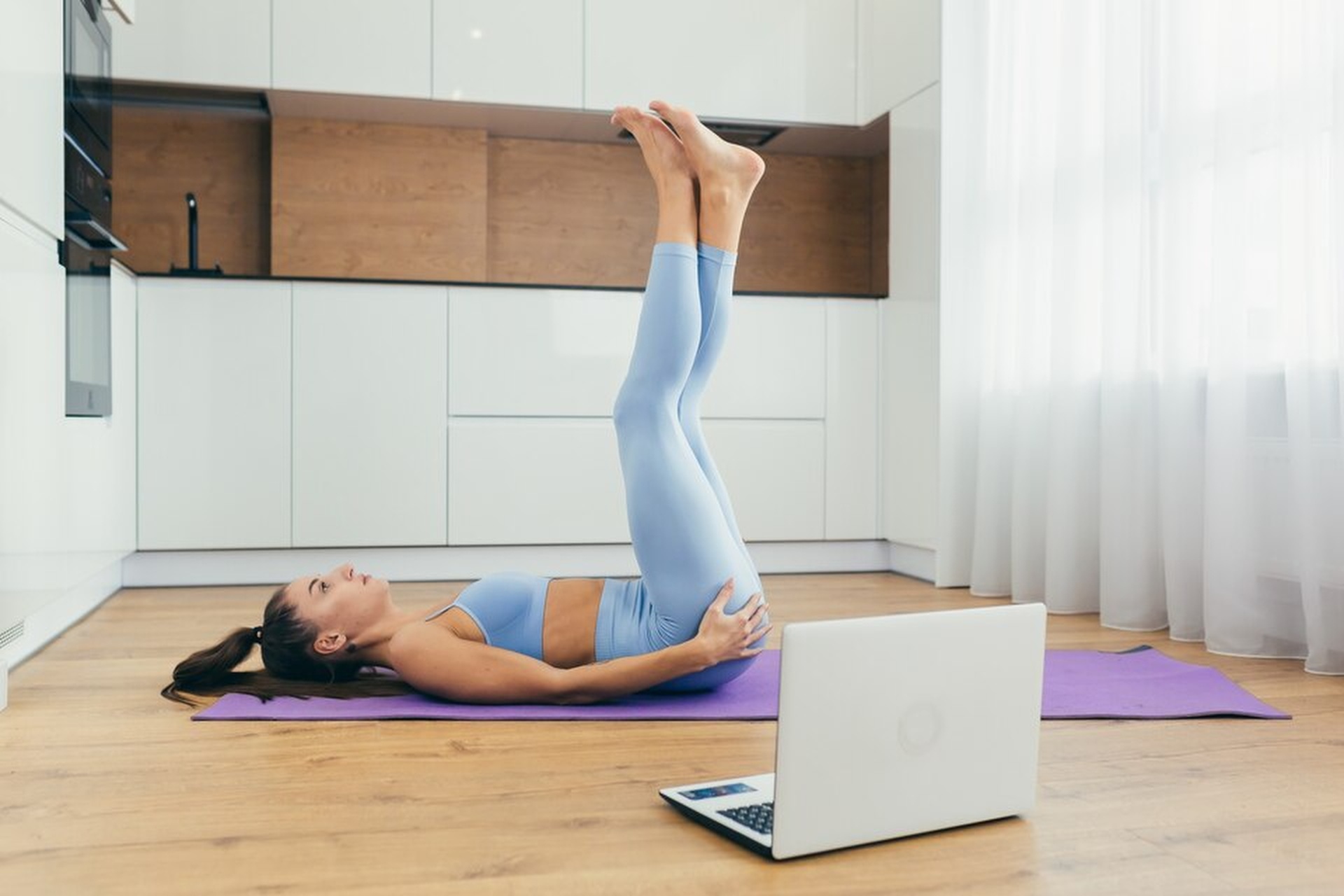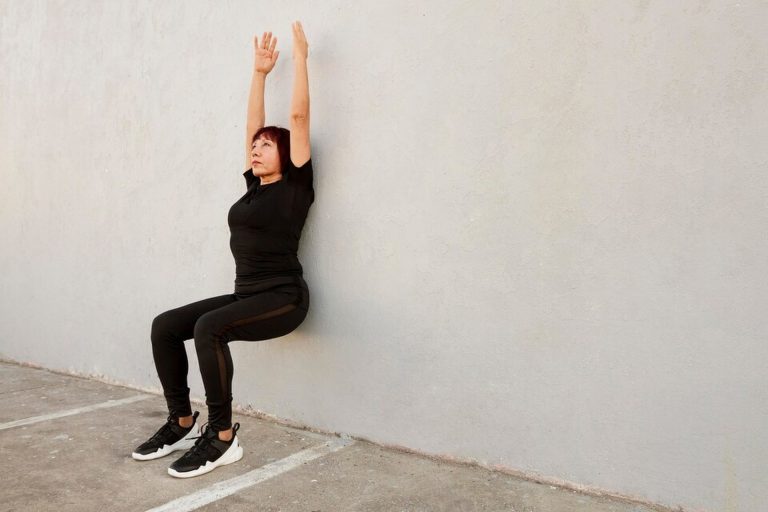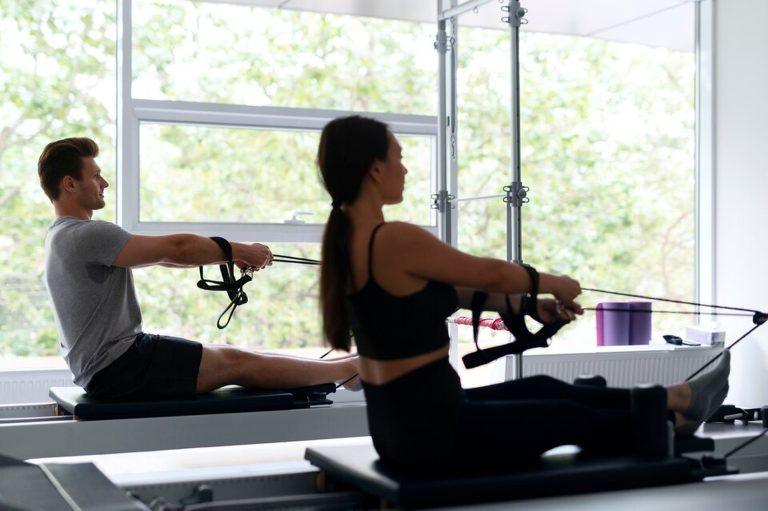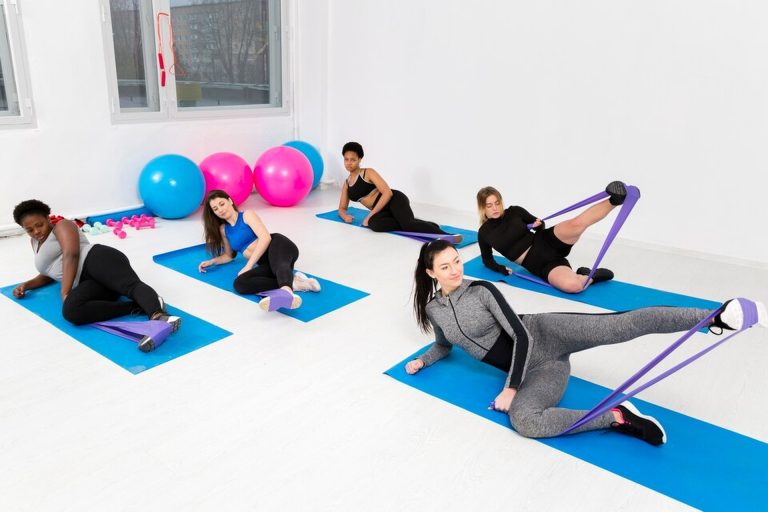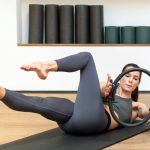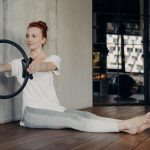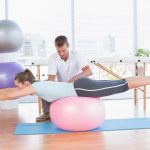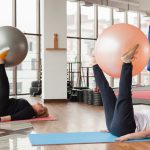Over twelve million people do Pilates every year around the world. It is also very famous at home. Pilates is good for your body and also helps with stress. It also makes you feel lighter sometimes. Many new starters do not go to the gym because they want to try at home and this guide is perfect for them. After reading this full post, you will know what equipment to buy, what routine to do, and how to stay serious for results.
Understanding The Basics Of Pilates
Joseph Pilates made Pilates in the early nineteen hundreds to help injured soldiers get better. He wanted to mix control strength and breath to help the body slowly heal.
People do Pilates in two main ways: one uses a mat on the floor and the other with a machine called a reformer in class. This type of exercise makes your posture good and your strength improves inside the middle body area that is your core basically. Many people think only girls or dancers do Pilates but even men and old people do it and get nice results.
There was one new study in two thousand twenty two that showed mat Pilates helped improve posture and endurance for sitters. They saw this change after just eight weeks which is not even too long for beginners also. If you learn the basics early then you can set proper goals and know which kind of class or video is best for you to start.
Essential Equipment For Home Pilates
- Mat: The only non-negotiable. Go for a thick, non-slip surface.
- Resistance Bands: Add intensity and aid flexibility training.
- Pilates Ring: Enhances arm, leg, and core workouts.
- Small Stability Ball: Improves balance and spinal alignment.
- Reformer Machines: What to know before investing.
Buying your first kit must be simple and not confusing, so you enjoy it. Last year, Amazon said that bands and rings were very popular items for people working out at home.
Start with only the things like a thick mat and maybe one or two small props, which are enough at first. When you see more improvement, then you can get more items, maybe slowly over time.
Setting Up Your Ideal Pilates Space
- Choosing the right space: importance of quiet, uncluttered areas.
- Lighting and atmosphere: using natural light or calming colours to create a motivating environment.
- Storage and accessibility: keeping props organised and within reach.
- Safety first: ensure slip-proof flooring and enough space for movement.
Having a peaceful place at home where no one will disturb you is very, very important for better focus. Your space should make you feel calm and ready. The better you feel, the better you will do.
You can also keep your mat and tools in one fixed area, so you do not lose time looking for them. According to one survey, people who made fixed workout rooms exercised longer and felt good to come back again later.
5 Beginner-friendly Pilates Exercises To Start With
The Hundred: This move helps warm up the whole body and teaches you breath control at the same time. Pump the arms straight up and down while keeping the abdomen tight for energy.
Roll-Up: It strengthens all stomach muscles and also makes your spine more flexible with movement. You do it slowly so that the back gets used to gentle stretch and control.
Single-Leg Stretch: This one works on your belly area and teaches coordination while holding one leg at once. You have to keep your head up and reach the opposite hand to the opposite knee for balance.
Bridges: These are the best for glutes and lower back strength because it lifts the hip upwards towards the ceiling. You do not need too much space so it fits well for small homes.
Spine Stretch Forward: This helps your hamstrings and your spine stay movable, which is helpful. Sit down and stretch forward while keeping your back as straight as possible, slowly.
How To Find Quality Instruction Online
- YouTube channels: top-rated instructors & series for beginners.
- Subscription apps: in-depth, progression-based programs.
- Live virtual classes: accountability and real-time feedback.
- Community support: using online forums or Facebook groups to stay motivated.
Most new learners first start by watching free videos and finding teachers they can understand well. Popular places like Blogilates or Lottie Murphy keep it simple and also fun to follow along.
Apps with subscriptions also give full courses, so you learn slowly and build step by step. Some people really like live classes because the teacher talks to you and corrects mistakes at the same time.
In the 2023 report, it said that a big number of people liked online Pilates because of flexible times and no travel. Test a few options and select what makes you actually want to come back every week to repeat.
Tips To Build A Sustainable At-home Pilates Routine
- Set realistic goals: focus on consistency over intensity in the beginning.
- Schedule your sessions: treat workouts like appointments.
- Track your progress: use a journal or app to build momentum.
- Mix it up: avoid burnout by varying routines and durations.
- Listen to your body: prioritise recovery and modify when needed.
Some people think more is better, but even short sessions work perfectly if done many times in a week. One person in his forties did fifteen minutes three times a week and showed better back health after six weeks.
Your goal must be to do regular things, your goal is not to be perfect. Keep a calendar where you tick mark all finished days, and it will make you feel happy to see progress.
Common Challenges For Beginners And How To Overcome Them
- Feeling overwhelmed by too many video options: how to simplify your search.
- Physical limitations: knowing how and when to modify moves.
- Lack of immediate results: shifting your mindset to long-term gain.
- Staying accountable without a class or trainer: creating your accountability system.
- Motivation slumps: incorporating variety and reward systems.
It is very common for new people to get confused when too many choices are on YouTube. Pick only two or three teachers to start then decide on one who speaks simply and clear so that confusion does not happen.
Also, your body has limits, so learn the modification moves, which are easy versions of the main ones. If you stay with one routine, your body may get bored, so add some change for excitement.
Staying with it the first month is hard because one study showed most people leave by week four. If you see your biggest problem earlier, then you can fix it before it becomes the reason to quit.
5 Common Mistakes To Avoid When Starting Pilates
- Skipping Warm-Ups: Jumping straight into exercises can lead to strain and reduce your performance.
- Overtraining: Doing too much too soon may lead to fatigue or poor form.
- Ignoring the Breath: Breath control is central to Pilates, and skipping it reduces its effectiveness.
- Comparing to Others: Progress differs by person comparison can discourage consistency.
- Using Incorrect Form: Practising with poor alignment builds bad habits that can lead to injury.
Many new people feel very excited to begin, and so they skip the warm-up, which then makes exercise harder. Remember, breathing is part of Pilates. Do not forget to inhale and exhale properly with every move.
Trying to do what others are doing too early is bad because your body is still learning. Watch your form in the mirror and go slow because a fast pace means more mistakes happen.
Conclusion
Starting your own Pilates at home is easy and anytime when you have the correct mindset and a guide. This journey gives you more strength, also keeps your mind fresh, and your back becomes even stronger if you stick to it.
Take your first step today by picking your mat and watching a beginner video that is clear and slow. You can become stronger and happier without even going outside; just begin your Pilates practice from home now.

